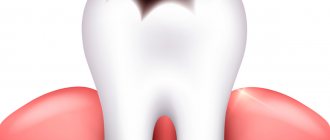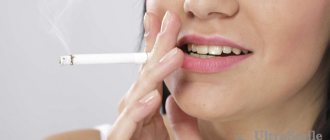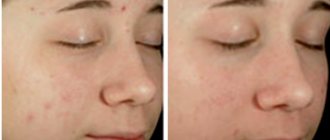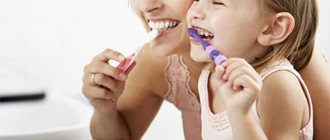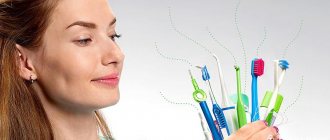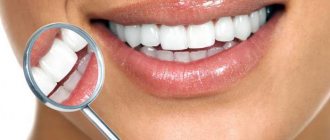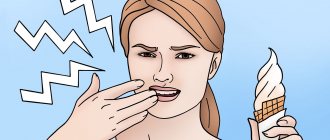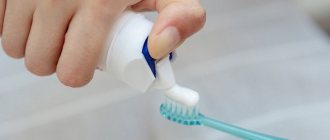Strong and beautiful teeth are every person’s dream. That is why special attention should be paid to proper oral hygiene. Toothpaste is an integral part of daily dental and gum care. It can not only maintain oral health, but also reduce the manifestations of various dental diseases. And today we will tell you everything about toothpastes, how to choose, what to look for in the composition, where to buy them.
How many of us buy toothpaste? They make a shopping list, go to the hypermarket and take the first one they come across. If this sounds like you, then most likely you underestimate the role of toothpaste in your health. A good toothpaste protects against caries, ensures that teeth do not lose minerals, and most importantly, does not harm the enamel.
In this article we will analyze in detail the compositions of modern toothpastes and tell you how to choose the right toothpaste.
Tip No. 1: calculate harmful components
Only a few of us have received medical education and have an idea of what is “mixed” into our daily oral and body care products. This applies not only to toothpastes, but also to the entire arsenal of drugs (shampoos, creams, etc.). But you always need to strive for perfection, and if you don’t at least know thoroughly all the nuances of production, then have an idea about them.
The content of harmful substances should be kept to a minimum
A good toothpaste should effectively remove food debris and fight various types of bacteria. It is also good if it helps to normalize the balance of microflora in the oral cavity, strengthen enamel, create conditions for the prevention of caries and gum disease, get rid of unpleasant odors and give fresh breath.
To provide all these positive properties, manufacturers add various active ingredients to the composition. But they must be as safe as possible, natural, and contain a minimum of harmful substances:
- lauryl sulfate and propylene glycol (PEG): components are almost irreplaceable in any hygiene product, as they contribute to the formation of thick foam and the destruction of dirt. But in large dosages they cause allergies, manifested by unbearable itching. They can also provoke inflammation of the gums and periodontal tissues (periodontitis and periodontal disease). In addition, the substances are extremely toxic, dry out the mucous membranes, and are hazardous to health,
Periodontitis and periodontal disease - parabens: the best toothpaste should not be stored for more than 12 months from the date of production (and this is the maximum). Otherwise, it contains a lot of parabens. These substances increase its shelf life, but are not excreted, but accumulate in the body and even provoke the development of cancerous tumors,
- triclosan, metronidazole: these are antibiotics and their use is justified only in the presence of acute inflammatory processes in the mouth. However, such components are often included in regular pastes and therefore many do not even suspect that their use should only be carried out under the strict supervision of the attending physician. As a last resort, you can use pastes in courses, no longer than one month in a row. Otherwise, you risk getting complications in your internal organs. For example, on the lungs, kidneys, liver. And there is also a risk of “exterminating” not only all harmful, but also beneficial microflora in the mouth.
On a note!
Sodium lauryl sulfate, for example, contains most of the well-known and advertised pastes, such as Blend-a-med, Colgate, Oral-B, Forest Balsam, New Pearl.
Compound
When choosing a paste, first of all you need to read its composition. It may contain natural and artificial components.
Common synthetic ingredients include:
- an antiseptic to fight germs, most often chlorhexidine;
- thickeners such as paraffin;
- mint or menthol additives;
- fortified products;
- dyes;
- foam formers.
"Strawberry & red clay", complex toothpaste
Compositions with natural ingredients, which are found in most oral care products, are valued:
- For cleaning - salt, clay, chalk, silicon dioxide.
- For taste - sweeteners, usually sorbitol, xylitol.
- Natural thickeners - gum, algae, food glycerin.
- Sodium citrate and zinc - remove plaque from the enamel surface and regulate acidity.
- Herbal infusions, extracts.
- Natural preservatives.
Blueberry & Charcoal, bioactive toothpaste
To prevent and treat diseases of the gums and enamel, medicinal herbs are added to toothpastes. The following herbs are most often found in formulations:
- Oak bark - relieves inflammation.
- St. John's wort, millennial, calendula, ginseng, chamomile, cloves - reduce sensitivity.
- Chitin and chitosan help in the treatment of periodontal disease.
- Rapa - fights excessive bleeding of gums.
"Kinotto & Lemongrass", refreshing toothpaste
Toothpaste. Daily care and sensitivity reduction
Attention! Pastes with the addition of natural propolis have an antibacterial effect. Such compositions promote the healing of microcracks on the gums.
Tip #2: pay attention to abrasives
Everyone knows that without abrasives, an adult paste will simply be inferior, because then it will not be able to cope with the plaque that forms on our teeth every day. By the way, on packages this indicator is usually indicated by the abbreviation RDA.
Please also note that the abrasives in toothpastes are different:
- calcium carbonate: the most common. These are quite large particles, they roughly remove plaque, but in no way have a remineralizing and restorative effect on the enamel,
- Aluminum oxide: the drug is prohibited in the European Union and the USA due to its harmfulness. It often leads to the formation of inflammation and ulcers in the mouth due to its aggressive component. It has also been proven that high levels of this substance in the body enhance skeletal abnormalities, disrupt the metabolism of phosphorus and calcium, slow down metabolism, cause osteoporosis of the bone structure,
- silicon oxide: the most preferred composition, it is finely dispersed and does not have a negative effect on the enamel.
Children should use children's toothpaste.
Another tip: never use the same toothpaste for all family members. It is not suitable for children, because the adult composition can be harmful to children’s fragile enamel; people with sensitive teeth should also be careful. The permissible number of abrasives for children is 20-30 RDA. For adults with healthy teeth - up to 100 RDA, for sensitive enamel - no more than 60. For smokers and those who want to whiten their shade - 120-150 RDA. The same paste cannot provide the same effect to everyone.
Frequently asked questions to the doctor
The best way to brush your teeth
Hello, I would like to know what is better tooth powder or toothpaste?
There is no universal product that could suit everyone. Compared to toothpaste, powder can be chosen based on the following points:
- It is more effective to remove tartar, plaque and other contaminants with a dry hygiene product. Even if the bristles of the brush are soft, the product will still cope with its task.
- Tooth powder not only whitens teeth, but also polishes them. After a few cleanings, you can notice the first result; you won’t be able to achieve this effect with paste.
- The powder strengthens tooth enamel and improves the condition of gums.
- Using the powder, you can normalize the acid-base balance in the oral cavity.
Thus, we can conclude that in many respects tooth powder is superior to toothpaste.
What helps with tartar?
Is it possible to find out which remedy is best for tartar?
The best remedy, according to many dentists, with which you can soften the stone is Belagel-R. It is used for preventive purposes, just apply the product to your teeth for a few minutes, then rinse your mouth and clean.
Which pasta is better?
Tell me, what is the best Russian toothpaste or is it better to give preference to foreign ones?
The best toothpaste made in our country is New Pearl Fluoride. It has a good whitening effect, refreshes the oral cavity, and contains a lot of calcium. The product cost is low. The only drawback that can be highlighted is that some people experience an allergic reaction after use.
Tip #3: Fluoride is not always beneficial
Some people mistakenly believe that which toothpaste is better can be determined by the high fluoride content in its composition. Indeed, the element is extremely important, since without it, proper calcium metabolism in the body is simply impossible. In addition, it helps strengthen the enamel, and recent studies have proven that the component reduces the risk of developing caries by 30-40%.
However, fluorine is toxic and is completely unsuitable for those who live in regions where the water and soil are saturated with it - the Moscow region, Nizhny Novgorod, Sverdlovsk, Tver, Tomsk regions. The microelement, or rather its excess, can provoke various diseases and cause extremely unattractive fluorosis on the teeth.
The photo shows dental fluorosis
As for the concentration, it should not exceed 1500 ppm in pastes for adults, and 500 for school-age children. For children under 5-6 years old, it is better to exclude this component altogether, because it is quite toxic if swallowed.
SPLAT Professional Biocalcium
pros
- Big tube
- Cleans well
- No discomfort when cleaning
- Refreshes
Minuses
- Not everyone will like the minty flavor.
From 54 ₽
The top of the toothpastes opens with a complex product with calcium from eggshells. Well restores damaged enamel and reduces tooth sensitivity. Special components in the composition effectively break down plaque, keeping your breath fresh for a long time. Other components also prevent the formation of tartar.
Tip #4: use the paste according to the situation
It is quite difficult to answer unequivocally the question of which toothpaste is best to use. After all, everyone is looking for exactly what suits them. For example, one person needs to whiten enamel at a given time. For gentle whitening, there are worthy representatives with a high content of abrasive substances that will effectively solve the problem of yellow enamel even in smokers. Among the leaders approved by experts were Colgate and Silca, which really give a brightening effect.
For each problem, select the appropriate paste
However, their composition is completely unsuitable for people with hypersensitive teeth who need to strengthen the enamel. The drug will also harm those who are trying to stop the development of gingivitis and get rid of bleeding gums.
If you are trying to whiten your teeth at home using toothpastes, then remember: no home whitening will be as effective as a procedure in the dental chair. As for safety, keep in mind that hydrogen peroxide and abrasives (both in pastes and in natural products: coal, soda, salt, lemon) in excessive quantities have a traumatic effect on the enamel, as a result of which it becomes thinner and becomes sensitive to temperature changes , to attack by bacteria. And enamel that has undergone such whitening requires remineralizing procedures.
Different pastes are suitable for different purposes. But remember that you cannot become attached to any one brand for a long time, even if it is the best toothpaste for you: change it once every three months so as not to become addictive. As for whitening and medicinal pastes, try to use them only after consultation with your dentist and for no longer than three weeks in a row.
Which toothpaste to brush your teeth when wearing braces?
While wearing braces, people need especially careful oral hygiene. Braces make the procedure more difficult. Metal components interfere with thorough cleaning of the surface of the teeth. In those areas that are tightly adjacent to the braces, deposits accumulate, gradually turning into tartar. To clean your teeth efficiently, using a brush and classic toothpaste is not enough. In this case, a different method is needed. Dentists recommend that patients with braces use special brushes and brushes. With their help, you can quickly and effectively clean even hard-to-reach areas. Among the cleaning compositions, the following are especially popular:
- ROX Pro Brackets & Ortho.
- Dentide Vitis Orthodontic.
- Biorepair Junior.
Tip #5: shop at the pharmacy
No one is safe from buying a fake, but the risk of getting a low-quality product increases significantly if you do it in markets or in underground passages, or purchase goods from distributors.
It is better to buy toothpaste at a pharmacy
It is better to contact pharmacy chains, because they employ pharmacists and pharmacists who are directly responsible for the quality of the received product, its certification, expiration dates and storage conditions.
In relation to this point, it would be fair to mention which toothpaste is the best. This is the one that has the original composition declared by the real manufacturer, and complies with GOSTs and general technical conditions: 7983-99 and 29188.0. For example, like some of the drugs presented in the table below1.
| Index | Quality rating "excellent" | Quality rating "good" | Quality rating "satisfactory" |
| Color, aroma, consistency | Sensodyne, Splat, Lacalut sensitive for sensitive teeth and gums. | All pastes are Lacalut, Durodont 5, Dent & Healsh, Biocon. | Products from the brands “Forest Balsam”, “New Pearl”, “Ftorodent”. |
| Acidity of the composition and its effect on teeth | Sensodyne, Splat, Biotene, Durodont 5, Dent & Health, Biocon. | Lacalut, Forest Balsam, Pearl, New Pearl. | "Lesnaya", "Ftorodent". |
Moreover, price is not at all an indicator of quality; a product may turn out to be good and at the same time cost mere trifles, or it may be expensive and not at all correspond to the declared characteristics.
ROCS Active Calcium
pros
- Strengthens enamel
- Reduces sensitivity
- Feeling clean
- Instant whitening
Minuses
- Not a very pleasant taste
- Expensive
From 200 ₽
Paste containing active calcium. This calcium is quickly incorporated into the structure of the teeth, restoring their shine. And also increasing resistance to caries. Low abrasiveness makes it possible to use the composition even for those who have increased sensitivity of teeth and gums.
Tip No. 6: “homemade” formulations are quite suitable for the prevention of diseases of teeth and gums
According to statistics, consumer choice is influenced by the smell, color, packaging and taste of the product, but not by its quality characteristics. At the same time, no more than 10% of the formulations sold in stores can truly boast of the status of “environmentally friendly and healthy product.” Take, for example, the fact that preservatives are no longer necessary to store them.
Even toothpastes “rich” in minerals and natural plant extracts, which are quite good and tested by consumers, contain harmful substances to one degree or another. For example, Lacalut, Splat, President, ROCS. Therefore, some rightly believe that the best toothpaste is the one you make yourself.
Homemade toothpaste should always be fresh
For home care of teeth and gums, sage, chamomile, mint, tea tree oil, honey, and birch bark are suitable. According to reviews, users use them to cleanse the oral cavity in different compositions and concentrations; which toothpastes are better, everyone here determines for himself.
However, it is worth remembering one rule: good “homemade” toothpaste should always be fresh, and it should be prepared daily. Otherwise, you may not only not be beneficial, but also harm the body. And it’s not a fact that without adding abrasive particles you will be able to get rid of plaque.
According to the portal’s editors, this advice should not be abused. And homemade formulations are best used not as an independent element of care, but in combination with other daily hygiene products: toothpaste selected based on the condition of your teeth and gums together with the dentist, mouth rinse, irrigator and floss, and a properly selected toothbrush.
If you are still thinking about which toothpaste is best, then immediately go to see a dentist, he will examine your oral cavity and will definitely help you with advice.
Notice
: Undefined variable: post_id in
/home/c/ch75405/public_html/wp-content/themes/UltraSmile/single-item.php
on line
45 Notice
: Undefined variable: full in
/home/c/ch75405/public_html/wp-content /themes/UltraSmile/single-item.php
on line
46
Rate this article:
( 4 ratings, average: 5.00 out of 5)
prevention
- According to independent studies.
What if there are problems with teeth?
A completely healthy patient and a patient with dental pathologies need different toothpastes. It is optimal for a doctor to recommend it, only then will the paste be an effective method of treatment. We will advise you on what to pay attention to when choosing care products so as not to harm yourself.
Sensitive teeth
Two types of care products help cope with this problem:
- with potassium nitrate or citrate - have a cumulative effect;
- containing arginine, strontium, NovaMin components - form a protective shell on the teeth. The result after use is noticeable immediately, but it is short-lived.
For effective treatment, the very cause of enamel sensitivity must be eliminated. This may be poor nutrition and calcium deficiency in the body, poor oral hygiene, worn enamel, smoking. A dentist can also help you figure this out.
Periodontal disease and other gum diseases
When choosing a paste for bleeding and periodontal inflammation, we most often focus on its natural composition and the presence of “medicinal herbs.”
But this is another misconception: chamomile, sage, oak bark have a psychological effect rather than proven medical effectiveness. The most they can do for you is to slightly reduce inflammation.
Aluminum lactate, chlorhexidine, triclosan, and tin fluoride have a real hemostatic effect. Look for these ingredients in the ingredients listed on the package.
If your gums are inflamed and bleeding, and instead of going to the dentist, you go to the pharmacy for a paste, even the right one, then the effect will be zero. At first, the symptoms will weaken somewhat, but then the bacteria will cause them again, acquiring resistance to the anti-inflammatory components of the paste.
So, first of all, you need a periodontist who will remove plaque and deposits, and also tell you about proper home oral hygiene.
Yellow enamel
There are two types of whitening toothpastes:
- enzymatic - contain pyrophosphates and polydone, as well as papain or bromelain enzymes;
- abrasive - with calcium carbonate, silicon dioxide or aluminum oxide.
Their effectiveness is approximately the same: they will remove stains from tea, cigarettes or coffee. Abrasives can be used no more than once a week: they have a very aggressive effect on the teeth, since they fight yellowness due to mechanical action. Enzyme - gently dissolve plaque and do not spoil the enamel, so coffee and cigarette lovers can use them constantly.
But to get rid of natural yellowness and achieve a snow-white Hollywood smile, you need to undergo professional teeth cleaning and whitening at the dentist.
